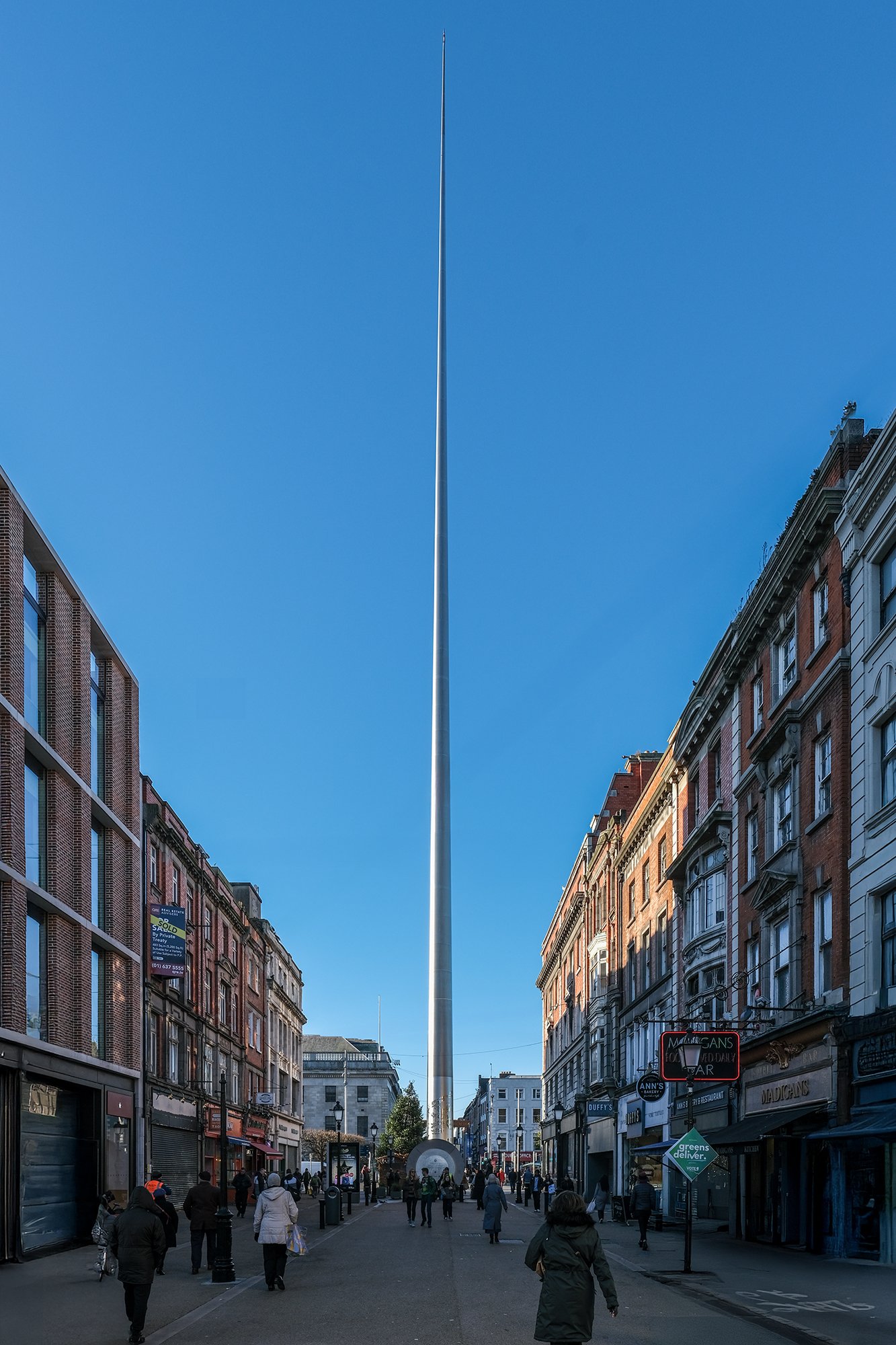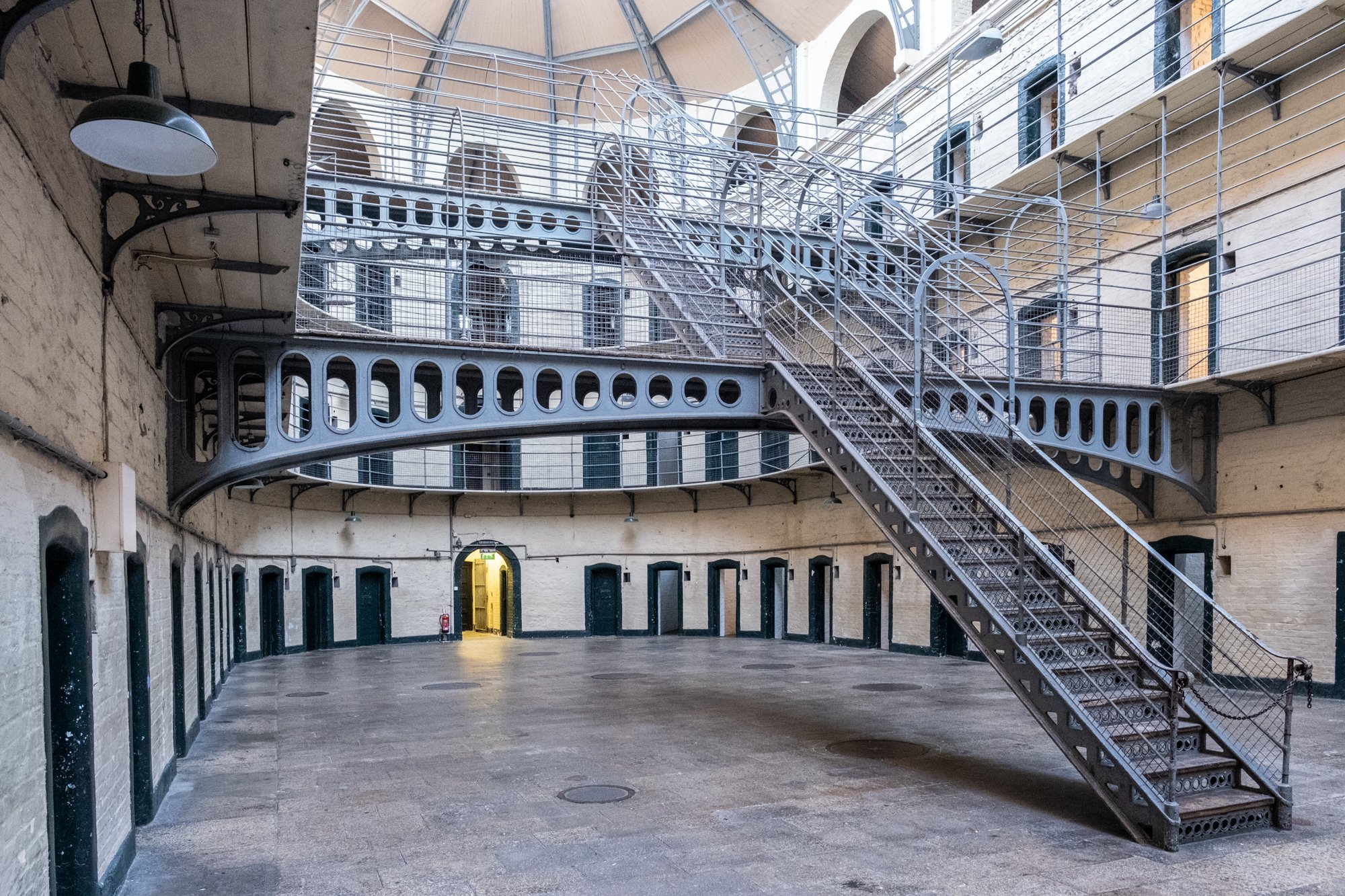Dublin Itinerary - Winter 2024
Because I had avoided visiting Ireland for the longest time, my first visit this past summer was extra special. Considering how much Brian enjoyed it, I reluctantly promised to return with him every year. Since I generally avoid revisiting the same country often, this was a concession on my part. Brian got annoyed with my constant complaints about Irish weather when we were there in July. He jokingly suggested we visit Ireland in the winter since I would be happy with the weather anyway. Fast forward a few months, and we were looking for a last-minute getaway over Thanksgiving break. I spotted a fantastic fare to Dublin with Aer Lingus, and it was just too good to pass up. I surprised myself by being back in Ireland only so quickly. Who would have thought?
With only five and a half days, we spent the entire trip in Dublin. While we considered spending a night in Belfast, the limited daylight hours and the prohibitive lodging cost in Belfast made such a short visit less appealing. I was pretty reticent about spending these many days in Dublin. It was rare for us to spend so much time in a single city. Even though I would gladly spend a week in Mexico City, Istanbul, or Rome, I was less sure of Dublin. We might have the time to visit every attraction listed in Rick Steves’s Dublin city guidebook.
Day 1 - New York - Dublin
Upon landing in Dublin, we were pleasantly surprised by the crisp blue sky, atypical for Dublin in November. The weather seemed better than any day from our summer trip. The handy Dublin Express bus took us to the city center efficiently. After dropping our luggage at Hampton by Hilton Dublin City Centre, I was eager to venture out to O’Connell Street, Dublin’s iconic boulevard and once the showcase of British Dublin. It is home to some of the city’s most iconic civic landmarks, such as the General Post Office, O’Connell Monument, and Parnell Monument. However, I must admit I was most enthralled by the 393-foot-tall Spire of Dublin. This relatively new addition commemorates the turn of the millennium; it was actually the one monument I associated with Dublin.
A few steps away is the New York–Dublin Portal, a contemporary video art installation that virtually connects the two cities. The portal's other end is in New York’s Madison Square Park, not from my office. I have been passing by it over the years, so I was happy to check out the other end of the portal finally. From there, it was just a short stroll to Trinity College, the country’s premier learning institution. Our visit coincided with their winter commencement ceremony, so we enjoyed the festive conviviality. For our first meal in Dublin, we stopped at the wine cellar at the local food emporium, Fallon & Byrne. It may not be cheap, but the quality is unbeatable.
Of all the historical sites in the city, Kilmainham Gaol was the only place that required advanced reservation due to its popularity. After lunch, we took the double-decker bus there just in time for our appointment. A former prison of Dublin, Kilmainham is key to the story of Ireland’s struggle for independence from London. Many leaders of the 1916 Easter Rising were imprisoned and executed here. The brutal execution of these political prisoners inadvertently turned the public sentiment in Ireland against the British. Justifiably, Kilmainham is the most important landmark in Dublin for anyone remotely interested in Irish history.
Right across from the jail is the campus of Royal Hospital Kilmainham. Designed by British military engineer William Robinson, the impressive hospital was the largest secular building in Ireland at the time. It was modeled after Paris’s Hôtel des Invalides. The hospital has since been converted into the Irish Museum of Modern Art. It may not be the most popular museum in the city, but the architecture and free admission make it a worthwhile stop on your visit to Kilmainham Gaol.
For our first dinner in Dublin, I made a reservation at Fish Shop, a small “artisanal” fish and chip restaurant near our hotel. Heavily influenced by Japanese tempura, their version was unlike any fish and chips we had before. I secretly wished we got to try other dishes on the menu. We were obligated to stop by a pub to round up our first day. Luckily, The Cobblestone Pub on Smithfield Square is just a few minutes away. This venerated pub is best known for traditional music sessions, and we could not think of a better end to our day.
Day 2 - Dublin
To our surprise, we overslept until half past ten and missed the inclusive breakfast. After a quick coffee and pastry at Croga Coffee, we took a short walk to Christ Church Cathedral, Church of one of the two cathedrals of the Church of Ireland, an Anglican communion. The location marks the heart of medieval Dublin and was the most coveted burial spot for centuries. The structure may be modest by European standards but has plenty of historical intrigues worth exploring. The cathedral’s massive crypt once hosted several pubs, much to the dismay of the visiting clergy.
Our next stop was Dublin Castle, the historical seat of the British in Ireland. Despite its historical symbolism, the castle is neither foreboding nor particularly extravagant. Only a tiny section of the castle complex is open to visitors, and most rooms are sparsely furnished. It was underwhelming. In hindsight, I should have made a reservation for a guided tour with OPW. We were disappointed that we did not get to use our OPW Heritage Card more often. The real highlight was the Christmas market in the castle courtyard. This is where you could ride the old-fashioned carousel and overpay for giant hotdogs.
The main item on today’s itinerary is the Guinness Storehouse, probably Dublin’s most popular tourist attraction. Due to its immense popularity, visitors are encouraged to make timed reservations a few days ago. As a non-beer-drinker, I did not have high expectations for the €33 per person Guinness Experience. Not surprisingly, beer production has moved away from the historical brewery long ago. From the moment we entered, it was clear that the entire “experience” was nothing other than a very drawn-out and over-produced infomercial. We learned less about beer here than in the Smithwick's Experience in Kilkenny. The visit ended in the famous rooftop Gravity Bar. According to Brian, there is something magical about the Guinness here.
After the Guinness Experience, I was in dire need of a dose of high culture. Luckily, the National Gallery of Ireland opened late into the evening every Thursday. Most government-run museums are free, and I was impressed with the breadth of Irish and European collections. The unexpected find was one of thirty-three known works of Dutch artist Johannes Vermeer. It was almost strange that we nearly had the whole museum to ourselves. I was saddened by the fact this fantastic museum received only a fraction of visitors compared to the Guinness Storehouse.
For dinner, we had a reservation at the nearby Lotus Eaters, The Asian-fusion eatery was good, but I admitted there were better choices when visiting Dublin. We stopped by Murphy's Ice Cream, the Dingle-based ice cream parlor with traditional Irish flavors, to get a dose of flavors. The Irish brown bread and Dingle gin flavors certainly brought us back to Dingle.
Day 3 - Dublin
When it comes to historical artifacts, no item in Dublin is more precious than the Book of Kells. The precious medieval manuscript contains four Gospels of the New Testament and represents the pinnacle of Insular illumination and Western calligraphy. Its centuries-long survival speaks to Ireland’s status as a land of saints and scholars within Europe. The book has been under the custodianship of Trinity College since 1654. The book may be a masterpiece, but it wasn't easy to appreciate as only one spread could be displayed at a time. Sadly for us, the spread on display was rather underwhelming.
The visit is coupled with a walk through the college’s Old Library. Its impressive Long Room is the most iconic interior space in Dublin. On exhibition are two of the most sacred objects in the republic: one of the original copies of the 1916 Proclamation of the Irish Republic and Brian Boru's harp, the national symbol of Ireland. During our visit, the library was under years of restoration, so all the books were removed for digitization and restoration. Cunningly, the college branded this as a once-in-a-lifetime opportunity to see the library empty. As a consolation, they installed Gaia, an inflatable globe by the British artist Luke Jerram.
Following yesterday's disappointing visit to the Guinness Storehouse, we wanted to avoid repeating the same mistake on our visit to the Jameson Distillery. Instead of an overpriced experience tour, we signed up for their “whiskey blending class.” It was a splurge at €60 a person, but we learned much about Irish whisky's varying styles and flavor profiles. The 90-minute session included tasting five whiskies and creating two valves of our custom blend of Jameson’s black barrel liquor. In the end, we were buzzed. Interestingly, Jameson barred people from signing up for more than one of these experiences as people could easily be over-intoxicated.
The highlight of today was a two-hour walking tour through the north side of Dublin. After scuffing down a quick Moroccan bowl at Tang, we met our guide, Sam, in front of the General Post Office. The tour focused on the events surrounding the 1916 Easter Rising and Ireland’s political struggle for independence. Although this may be a tip-based, free walking tour, the experience was excellent, especially for history junkies like myself. The tour introduced all the political giants of 20th-century Ireland, such as James Connolly, Jim Larkin, and Charles Stewart Parnell.
The tour ended at the Famine Memorial on the bank of the River Liffey. The overall narrative of this tour was undoubtedly sobering, but it was quite an educational experience. To lighten the mood, we went across the river for dinner at one of Dublin’s more famous bars, Bruxelles, which Brian’s acquaintances recommended. Sadly, I don’t believe they are known for traditional Irish music.
Day 4 - Dublin
It was finally the time to check out Saint Patrick’s Cathedral, Dublin’s other medieval cathedral. This historical cathedral supposedly marked the spot where Saint Patrick performed the baptism. The building was substantially renovated in the 1860s under the patronage of Benjamin Guinness. That restoration may have saved the cathedral from ruin, but it was so substantially rebuilt that the church appears more Victorian than medieval. Considered the national cathedral of sorts, albeit protestant, Saint Patrick is also home to memorials to those who died fighting for British Ireland. This is also the venue of the annual Remembrance Day ceremonies and closely associated with the Most Illustrious Order of Saint Patrick.
A short walk away is Saint Stephen’s Green, Dublin’s premier public park. The lovely landscaped park has numerous memorials and busts of famous Irish notables. It was also a major battleground of the 1916 Easter Rising. The surrounding neighborhood is home to some of Dublin’s finest Georgian homes and numerous government buildings, including the National Parliament, the Department of the Taoiseach, and the National Library. The nearby Merrion Square is another genteel park lined with beautiful townhouses. The square is most famous for the irreverent Oscar Wilde Memorial.
Wilde is one of Ireland’s most famous playwrights known for his quick wit and prose. His meteoric success came to a scratching halt when he was arrested for homosexuality and public indecency. Born in a wealthy family, he spent his formative years in one of the grandest townhouses on Merrion Square. The Oscar Wilde House is now a house museum and instructional space for American College Dublin. While much of the original furnishing was gone, the museum glimpses Wilde’s enormously privileged upbringing. It also just happened that our visit coincided with the 124th anniversary of his passing.
After a glorious sourdough pizza at VICE Pizza and Wing Stop, we headed across River Liffey for a guided tour of The Jeanie Johnston Tall Ship. This replica of the original was a cargo vessel that successfully transported immigrants to the New World. Unlike typical “coffin ships” of the era, Jeanie Johnston is famous for her hygienic and humane treatment of those on board. She earned the distinction as the only immigrant ship with zero fatalities of both crew and passengers. The hour-long tour told the story of the vessel and the heartbreaking reality behind the Great Famine.
To round up our busy day of sightseeing, we headed across the street to EPIC - The Irish Emigration Museum. This privately owned, state-of-the-art museum is a relatively new addition to Dublin’s tourist trail and has won numerous awards in exhibition design. Through a series of themed galleries, the exhibition approached the story of Irish emigration through many angles. It examined the reasons behind the high level of emigration and the contributions of Irish immigrants across the globe. It is one of the most creatively interactive museums I have visited.
Since this was Saturday evening, getting a restaurant reservation in central Dublin wasn't easy. Luckily, we scored a table at BANG Restaurant, which served elevated Irish cuisine. After dinner, we strolled around Temple Bar, the city’s center for nightlife. It was a little rowdy for our taste, but we do appreciate thee convivial atmosphere did warm up the cold Irish winter. We ended our night with a live music session at O'Riordans Bar.
Day 5 - Dublin
This was our last full day in Dublin, so I checked my guidebook to ensure we had visited all the major sites. One significant omission was 14 Henrietta Street, Dublin’s tenement museum. A former grand Georgian townhouse for Lord Richard Molesworth and his second wife, Mary Jenney Usher, this house was converted into a tenement after the Act of Union and the dissolution of the Irish parliament. The history of this house is an excellent documentation of the rise and fall of Dublin. The living standards were atrocious, but many former residents remembered the close-knit community fondly.
For lunch, we got a table at Bewley's Grafton Street, one of the most iconic cafes in Dublin. It has the hustle and bustle of a Jersey diner but the refinement you would expect in London. The splendid interior is decorated with precious stained glass by Harry Clarke, Pauline Bewick, and Jim Fitzpatrick. Our last major stop was the National Museum of Ireland - Archaeology. This free museum houses numerous historical artifacts, focusing on items from prehistoric Ireland and the Viking era. The museum is home to some of the country’s most intriguing objects, such as the bog bodies, Bronze Age gold collars, and Tara Brooch. The museum’s vast collection reminded me how much of Ireland we have yet to visit.
Before our dinner at Matt The Thresher, we had enough time to return to Jameson Distillery for a glass of their specialty Old Fashion. Jameson put us at ease better than the over-commercialization of the Guinness Storehouse. Of course, our last evening in Ireland would not be complete without another pub visit. We returned to our favorite, Cobblestone Pub, for a few more pints. However, I was surprised to learn that pubs in Ireland had to close at eleven o'clock on Sunday. I suppose the Church’s influences are still present.
Day 6 - Dublin - New York
Our flight back home was mid-afternoon, so we had just a few hours left before heading to the airport. Given the perfect weather, I decided to venture out early to take some photographs along River Liffey. The one landmark I wanted to visit was the Samuel Beckett Bridge by Santiago Calatrava. This iconic bridge is inspired by the Irish harp and is designed to rotate on its base, allowing river traffic to pass through. Calatrava is one of the most innovative living architects, but his works could either be a stroke of genius or the most enormous white elephants. I was jealous that Dublin has such a beautiful bridge from him while we have the ridiculous World Trade Center Oculus in New York.
The only other museum I wanted to visit was the General Post Office (GPO)O Museum. However, I could not bring myself to pay the €17 per person admission fee. Instead, we headed to the Custom House Visitor Centre to make final use of our OPW Heritage Card. The Custom House was once a major center of British administration and an imposing edifice on the bank of River Liffey. The restored building is now a museum dedicated to Dublin’s mercantile history. The highlight for us was a special exhibition on the 1921 attack by the Irish Republican Army. I suppose I was just very interested in revolutionary history in general.
After a quick dinner at the Old Storehouse Bar and Restaurant in Temple Bar, I had barely enough time to squeeze in a quick visit to the Garden of Remembrance. This modest garden is dedicated to those who gave their lives to the Irish Independence. This spot marks where Irish Volunteers were held before being taken to Kilmainham Gaol. The art-deco garden is full of nationalist symbolism and a surprisingly pleasant spot for such a somber place. Well, that was a wrap for our six-day trip to Dublin!




































